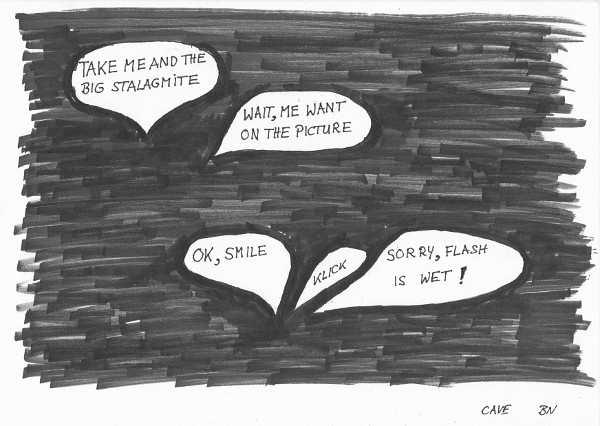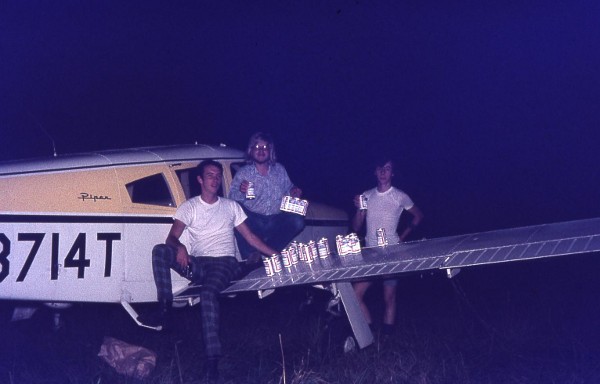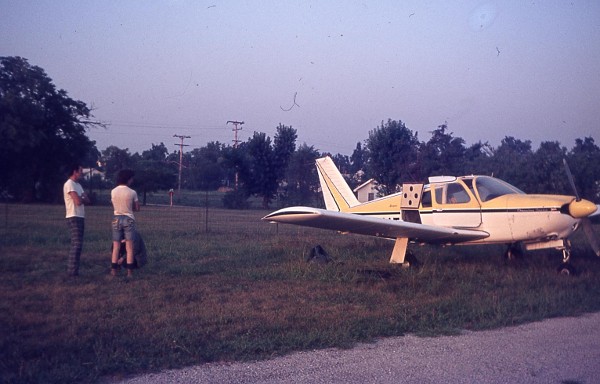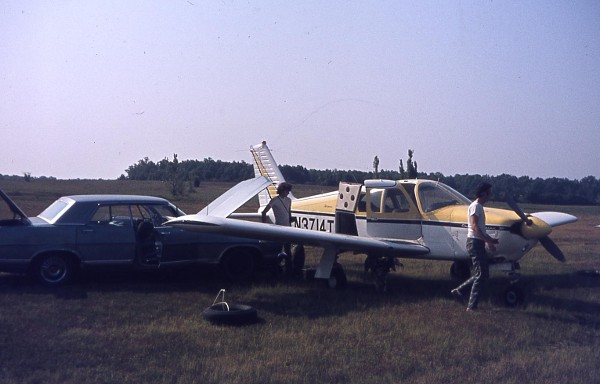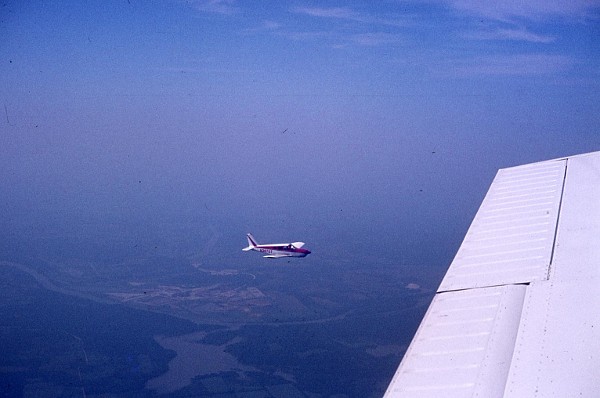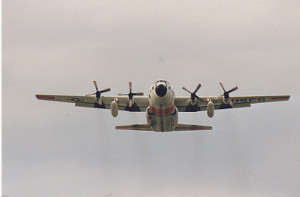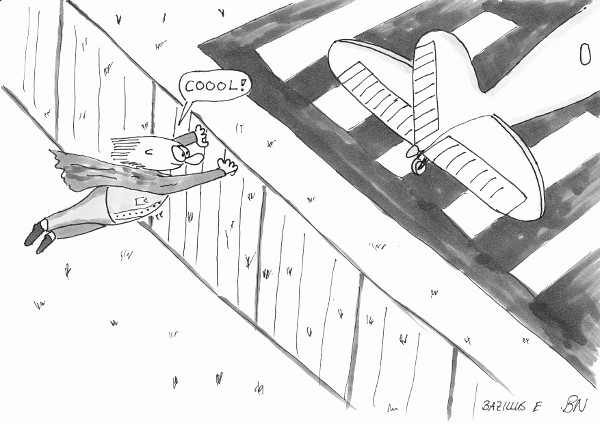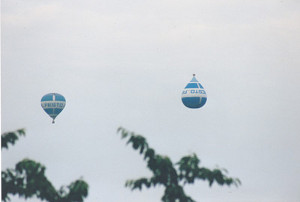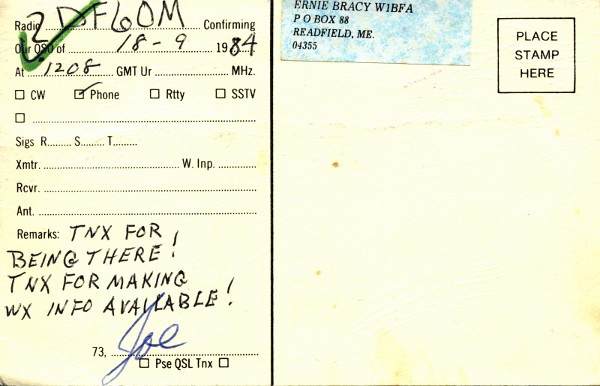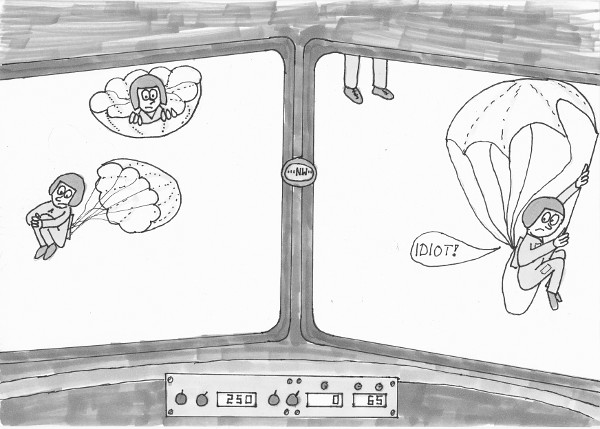Somehow aviation has bestowed one of the most splendid adventures of my life upon me! My friend Mike from Nebraska, my former physics teacher from my exchange year, had suggested during one of my revisits to Nebraska we should take another cave trip into Carroll Cave in central Missouri, the cave we had been in twice before over the years. Since it would be virtually impossible to drive to this site from Nebraska, take the trip into the cave and drive back on one long weekend, it was Mike who suggested we should fly down to save time. So a “flying trip underground” became true!
As an aviation nut, it seems a bit odd that you do the exact contrary of flying, going underground. But somehow I have not only caught the aviation bug, but also the “speleo bug”! I had recently joined a caving club in Germany and was enjoying going spelunking very much! And what better combination could there be than to fly to go caving!
It is 3.30 Sunday afternoon. We have finally arrived at the entrance of Carroll Cave, after a one and a half hour flight from Lincoln, Nebraska to Camdenton, Missouri and a drive in a rental car across the winding roads of the Ozarks to the cave entrance. All the equipment is piled up on the ground, and the four of us, which are Mike, Russell, Dale and me, are getting ready for our big trip into the cave. Mike is already dressed-up and starts packing sleeping bags and dry clothes in several layers of plastic bags, so that they will not get wet on the way in.
The first 1000 feet of the cave is a narrow water-passage, with water up to your chest, and at two places even up to your lips with an airspace of only a few inches left to the ceiling. After those two “Neckbreakers”, as these places are called, and a few more hundred feet of deep water the cave will open up to a gigantic dome, the “Mountain Room”, where we will camp tonight. But first we will have to get through the water and haul all the stuff along dry. And the water has only 45 degrees Fahrenheit, and the cave is not much warmer!
Since we all are “hard guys”, this will not bother us too much! To be honest though, I am cheating a little bit on that, because I brought along a wet-suit which I use on cave-trips in Germany. This is one of those neoprene-suits which fits tight to your body, so that only a thin film of water forms between your skin and the suit insulating you from any cold. It is a specially designed suit for caving, not as thick as the scuba-diving ones, so you can move easily about. I’m wearing that underneath my cave-overalls. Unfortunately the other three do not have such a suit, so they plan to move fast through the water and give me dirty names when the water gets deeper!
Finally we are done. There is so much stuff we have to take along, so two of us will have to make two trips in to get everything to our campsite. Naturally I am one of them, the toss of a coin finds out that Russ is the other unlucky person who has to do it twice! Mike and Dale will wait outside until we return from our first trip.There is no point that they should go along on the first trip to Mountain Room and then wait there freezing.
The carbide lamps are burning, the gate to the cave is opened, and off we go. First the water is knee deep, no problem. Soon we loose daylight since the passage turned to the left. Only our carbide lamps are providing light now, and we better make sure they will do it for the next 24 hours! Loosing your light in a cave will leave nothing to do but sit there and wait for somebody to help you, in the absolute darkness you will even fail to touch your nose with your finger. — The water gets deeper! I feel it rinning down my neck, and it’s cold!
After a couple of seconds it warms up inside my wet-suit, I don’t feel anything any more. But poor Russ must feel it! So we are moving fast to get through. The water is crystal—clear, we have no problems moving along. Fortunately the ground is even and there are no rocks, so we won’t have any problems going back out after a while with the water all turned muddy. And there is the first Neckbreaker! A big red arrow on the ceiling points to the best spot to get through. And the water seems to be very low, about a foot of air left! I stretch out in the water, floating through, I don’t even have to take my hard hat off. It takes about a minute, then I’m through. Russ is right behind me, wet up to his neck, but smiling. This was the easiest crossing of this place we have ever done (we’ve been in this cave twice before). But – Neckbreaker number 2 is still coming up. It turns out that this one has a couple of inches less airspace than the first one. But – we make it without problems as well.
After another three or four hundred feet of walking in chest-high water a black nothing opens up in front of us: Mountain Room! After you have been in the relatively small-sized water passage it is just overwhelming to enter this big dome. Our lamps are just not strong enough to light up the whole place. It is probably 300 feet long, 200 feet wide and at least 100 feet high! We get out of the water onto a mud-bank and start looking for a good campsite. Pretty soon we find it: A spot off to the left, about 50 feet above the river level, and it is dry and flat, just perfect for the camp. We drop all the things there we brought along and start going back, into the water, through the two Neckbreakers and out into the sunlight. The trip took us 40 minutes, during which Mike and Dale finished preparing the rest of the stuff.
After Russ and I get done telling about our trip in and the campsite we had found, everybody loads up and heads into the cave. The last guy locks the gate from inside and then makes sure again and again that he will not loose the key to the gate! It is fun for Russ and me, being more or less used to the water by now, to watch the other two get wet. The water gets deeper slowly, so the agony lasts for a long time. They are screaming and cursing at us! There is no help though, Neckbreaker forces everyone into the water up to their ears! Finally we arrive at Mountain Room, climbing up to our platform. A big plastic tarp gives us a piece of clean ground, where we put our sleeping bags, the dry clothes, a camp stove and all the other things meant for the camp.
Soon we are done with setting up camp. Everyone but me changed clothes, is now dry, warm and comfortable. All of us are burning to explore around a little bit. We walk up into the upper levels of Mountain Room, squeeze ourselves into small holes in the walls, but there is no continuation on this side of the dome. It seems that this huge dome has just one continuation: the Main Passage. So that’s what we want to follow now for a while. It is only six o’clock and we have all the time in the world!
On the way back down to the river, I’m first, I’m running down and throwing myself into the water! Walking and crawling around in a wet-suit makes you so hot, you can’t stand it any more. But in the water it is nice and cool! I feel like a guy in a Nestea commercial downing some iced-tea and plunging backwards into a swimming pool. The other three are standing on the river bank laughing at me. They just don’t know how nice 45 degrees water can feel!
The main passage of Carroll Cave is tremendously big. The tunnel has an average width of 40 to 50 feet and about the same height. It winds back and forth, the ground is covered with chocolate-colored mud in which the river has cut a small channel which we are crossing frequently. Sometimes we are walking on rocks and gravel, which the river has deposited there, and sometimes we have to struggle through soft mud up to our knees, taking away quite some energy. Every once in a while the river forms small ponds, which I cross with my wet-suit, happy to cool down a little bit, while the others climb along the banks over breakdown piles. The first thing we discover is that some survey crews must have been in the cave before; and they left small reflective markers every 500 feet. That is quite nice, we can tell how far we are from Mountain Room!
We find out soon, it takes us about 20 minutes to travel 1000 feet. Also it shows that you are always overestimating distances in a cave, since 1000 feet feel like 4000! The survey crew has also marked every side-lead turning off the main passage, there is one about every 500 feet. And then – we see some fish in the river! That is quite a sensation, for we think we must be about 2000 or even 3000 feet from the entrance. The fish are of dark color, almost black, the smallest ones are an inch long, the biggest must be about 10 inches. Dale and Mike try to catch one, but they don’t succeed. And probably that is a good thing, since we also want to stick to the cavers motto: Kill Nothing but Time, Take Nothing but Pictures, Leave Nothing but Footprints!
We wonder how the fish can see or maybe feel our presence, since they don’t seem to have eyes. And what are they living off, we ask ourselves, there are no plants in the water, and no other animals we can see. But there must be some sources of nutrition, maybe some microscopic insects or creatures, or maybe the fish only live from the organic material flushed into the cave from the surface. It’s too bad that we don’t have a specialist along, so the four of us can only take guesses.
Meanwhile we have reached the 2500 foot marker from the Mountain Room, and we think about turning around. There is an opening in the left wall, another side-lead. Someone expresses the wish to take a look at it before turning around, so we find ourselves ducking and crawling through a passage two feet wide and three to four feet high. A small marker at the entrance opening of this passage said that this is “L-6”, probably the sixth side-lead from the Mountain Room. After about 100 feet we get to a Y-junction, so we continue into the left lead. A tight spot forces us down on our bellies, but it is easy crawling. Behind another turn the passage opens up to a small dome, the walls covered with beautiful formations, like draperies. Some of them are in a rusty red color, others are completely white. Above us the dome continues as a shaft, we get a few glances into a higher system of passages there, and more formations along the passage walls. Russ gives it a try to climb, but the walls of the passage we are in are overhanging, and without rope and/or other climbing aids it is virtually impossible and also too dangerous to push it. And we don’t want to damage the formations or even get them dirty. It seems only to be a climb of 15 feet or so.
We illuminate the openings of the higher system with our lamps from down below trying to see as much as possible. It is hard to tell if the passages up there are virgin, that means that no one has ever before entered them. Down here there are plenty of marks and footprints in the mud.
Finally we decide we have seen enough, now it is time to turn around. When we get to the Y-junction, Russ insists on having a quick look into “that other lead”. This one continues as the lead before the junction, a duck walk in a passage two feet wide and four to five high. It turns and twists, back and forth, back and forth. It goes and goes on for ever! Finally I sit down on the ground and refuse to go on, I’m close to a heat-stroke in my wet-suit, since no pool of water had cooled me for a while! Mike and Dale are in front of me, they also stop. Russ still wants to explore on a bit, he says, just a few feet within shouting distance. We hear him shove around the next few bends, and then a minute or so later we hear him shout that his light went out and that he can’t get it relit! How nice!
Dale rushes on and reaches him after a few more bends in the passage. Together they work on his lamp, but it still doesn’t work. It probably needs a change of carbide. But – we left all the stuff at the entrance of L-6! Russ just has to walk, or better duck and crawl between two others with light. All goes well, and ten minutes later we are back in the big Main Passage. Here the guys start working on their lamps while I take a plunge into the next deeper pool of water. Aahhhh!!
All the lamps are up again, doing fine now. Mine even doesn’t need new carbide, it is a special construction I also brought with me from Germany. It needs a fresh load of carbide about every 8 hours, while the others need to change carbide every four hours. Carbide lamps are the best source of light for a cave. They last longer and produce brighter light than electric lamps, just on a handful of carbide! And who wants to pay and carry around several sets of batteries for light on a trip like ours! Nowadays this seems to be different with the new LED-technology and affordable rechargeable batteries available.
We are back at our campsite. It is 8:15, we have walked straight back from our adventure in L-6. Mike is playing cook, he pours a couple of cans of beef stew in a big pot and puts that onto our stove. Russ and Dale are in their sleeping bags chatting and having a beer, while I’m still trying to get my wet-suit off! It’s agony! Finally I manage it somehow, just in time when dinner is ready. Beef stew with crackers and beer in Mountain Room, no fancy dinner in a Hilton Hotel could be better than this! Some lollies are for desert!
Pretty soon everybody is happy and very comfortable in his sleeping bag. A big discussion gets started covering who will be responsible of doing the dishes, which would mean getting out of the warm and cozy sleeping bag into the damp cave air, walking down to the river 50 feet below us, and sitting down on the mud-bank trying to clean things up. Every time we take a vote, the specific person has some important objections, so finally the dishes remain undone …!
All the lights are out, only a candle is burning, barely illuminating the ceiling of Mountain Room. And then – we see some bats flying around, circling around us and passing overhead. There might be about a dozen of them. They don’t bother us though. Bats are very interesting animals. Inside the cave, in total darkness, they must fly completely “on instruments”, they use their sonar-orientation system, by producing sounds of ultra high frequencies. Any obstacle will reflect these sounds, the echo will tell the bat where and at what distance it is, how big it is as well. So bats almost never hit anything, neither their fellow bats nor even you! And all the horror tales about them are not true either; they just are small but very useful creatures; when they come out from caves where they sleep during the daytime, they hunt for bugs and insects. And their flying skills are just awesome!
By talking about bats and other interesting issues, everybody gets tired and eventually fades out. When I wake up it’s pitch-black! Every now and then I hear a drop of water falling down somewhere or I hear a faint splash of the river down below. What time is it? I take a look at my watch: It’s five o’ clock in the morning.
I light a couple of candles and wake up the others. Actually we had wanted to get up around four, so we would have plenty of time for our big trip deeper into the cave. Everybody has slept quite well, only Dale was a little bit cold during the night. Soon breakfast is ready, consisting of some leftover stew and hot chocolate! A few more minutes in the warm sleeping bag after breakfast really feels nice! But then we have to get busy, if we want to get anything accomplished. The worst thing comes first: Putting on your cold, wet, muddy cave-clothes. Everyone screams and shouts, mainly questioning himself and everyone why in the world we are putting up with this stupid idea of a long cave-trip. My wet-suit is also damp and soo cold, uaaahhh! But finally the clothes are put on and warmed up.
I collect all the carbide lamps and walk down to the river to clean them and fill them with fresh carbide and water. The spent carbide goes into plastic bags to be carried back out of the cave. One of the cardinal sins of people not caring about conserving the fragile environment of caves is leaving spent carbide somewhere in the cave, where it will stay for years, centuries or even thousands of years!
While I’m sitting on the mud-bank next to the river, I hear a strange sound out of the passage leading to the Neckbreakers and eventually out of the cave. And then I see it – there are dozens of bats coming back into the cave, no, hundreds of them! They swirl around me, and there are even more coming! I’ve never seen anything like that before! They are going, no, flying up the Main Passage, and when they fly by close to me I hear this funny, rattling and clicking sound again. But not one bat hits me! For several minutes I sit in awe and watch, I just wish I’d have a movie camera here to record sight and sound. Soon there are less bats coming, it seems that the main bunch is through now. I don’t know how many there were, but it must have been hundreds, maybe even thousands.
The camp is all broken up, the stuff ready to be hauled outside, that we’ll do tonight. But first we will set off on our big trip deeper inside! To be taken along are quite a few things: enough supplies of carbide, water will be provided by the river. Then we need bags for spent carbide and garbage, lots of candy bars, an ammunition-box with camera and flash-equipment, a collection of tools and spare lamp parts as tips, tip reamers, tools, glue etc. Everybody takes something, the speleology-bag (dragging bag) I also brought along from Germany comes in quite handy.
Before we set off, everyone makes sure that his lamp works, he has his emergency lights ready and working, which consist of a spare flashlight and also a cyalume light-stick in a pocket. Everything is OK., we are on our way. We walk up the Main Passage, well known to us by now. We make it to the junction with L-6 in half an hour. Pretty soon after the junction, where we turned around yesterday, walking becomes more and more difficult. The mud on the ground is very soft, sticky, sometimes several feet deep. It sucks! It has a consistency like nougat, but it probably won’t taste as good! The river starts to meander back and forth through the mud, and we have to cross it at every meander, which is extremely exhausting! Around the next bend there is a rope-ladder hanging down from a hole in the ceiling. This ladder, as we know from some friends who know the cave much better, leads to an upper passage system, which is connected to another Y-junction further down the way. But we stay in the lower system, the Main Passage, together with the river.
Half an hour later we have reached “Crystal Junction”, here the main passage seems to make a major turn to the left. We know it leads to the “Crystal Room”, a few thousand feet further on. But we will not go there today. The true Main Passage goes straight on, although the river seems to be smaller than the one coming out of the Crystal Room passage.
After taking a few pictures (and cooling down in the junction pool) we continue on straight ahead. Walking becomes easier again, for the smaller river has not deposited so much mud. Also the mud is nice and hard, like ordinary chocolate! The water has cut a neat channel in it, about two feet wide, and it meanders back and forth from wall to wall. The passage itself has become a bit smaller, but still about 20 to 30 feet wide and also high. And then we reach an area with lots of formations!
The walls are covered with them, sparkling in our lights, consisting all colors from a deep chocolate brown, then red to a brilliant white. From the ceiling there are thousands of “macaronis” hanging, as those very thin and delicate stalactites are called. They have a diameter of a single drop of water and a length of up to a few feet. They are all untouched; I’ve seen caves before where similar decorations have mostly been broken off by vandalists!
Then I discover some excentriques! These are delicate stalactites which do not follow the law of gravity which should make them grow straight down, they are curved, twisted and spiraled around in all funny directions. There must be hundreds of them as well. What a sight!
A lot of the macaronis are tilted into the direction of the Main Passage, pointing out. Probably a wind blowing mainly in the direction towards the entrance for long times must have caused them to grow that way. As we move on, more formations appear along the passage. And also more excentriques. It is strange, home in Germany we get excited if we find a single excentrique in a cave, and here are so many of them!
The formation-area lasts for a few hundred feet. Thereafter the passage appears as before: Yellow-brown walls, the ground covered with dark, chocolate-colored mud and the winding channel of the river. The mud gets stickier again! Behind a couple more bends we finally reach the “Y-Junction”, a bigger room with a side lead to the right which, as we know, feeds back to the rope-ladder. A marker on the wall tells us that we are 6,500 feet from the Mountain Room, so that’s more than a mile! It took us one and a half hours to get here. We decide to speed it up a little bit now, so we get to see more! The Main Passage continues to the left, now a bit different than before. The river often gets covered by breakdown piles, over which we are climbing. Big piles of bat manure tell us that we are in an area where the bats must reside during the day or during winter. And there they are – we discover a bunch of them hanging from the ceiling. They are disturbed by our lights and start to swirl away. There must be a few hundred of them together covering a spot not bigger than a square foot. We can hear them squealing angrily about our appearance.
On and on the passage goes, sometimes we walk in the river, sometimes over breakdown piles. And then the walls close in and the ceiling comes down. We remember this part from an earlier trip a few years back: We will have to go in the water with about a foot of air space to the ceiling for a distance of about 200 feet. The tricky thing about this spot, there are big, sturdy stalagmites submerged under water, and with mud getting stirred up you can’t see them. So if you move on too fast, you bang into them with your delicate parts of your body, which is not too nice. So this is not another Neckbreaker, but rather a “Crotchbreaker”! I’m going first, slowly feeling my way, spotting the stalagmites in the water and warning the others. Again the water is quite low, leaving us more airspace than we expected. Five minutes later everyone is through and on the other side.
We are back in walking cave. Lots of formations appear again, in all colors and shapes. It is just too much to grasp, I’m taking a few pictures hoping they will turn out. Plastic marking-tape is stretched out by the explorers of the cave to force everyone to walk clear of the beautiful, white formations. The passage leading on is very big again, with lots of breakdown piles we have to cross. On the left side a big side-lead opens up, somebody has smoked “Maped Log” with a carbide lamp on a mud-bank. And then there is that small hole in the right wall.
We remember this well, this will be the only connection we know to the “Thunder River System”, which intersects underneath of the Main Passage of Carroll Cave. We take a look ahead down the Main Passage, it continues big and wide into the darkness. We turn around and head for the small hole, since Thunder River is the target we had wanted to shoot for. The hole starts as a crawlway, very much like L-6, it leads steeply downhill. After a few minutes of crawling and ducking we can hear a rumble: Thunder River! Then the crawlway breaks out into walking cave again, with another river, running from left to right. The walls are reddish colored, and the river is much bigger than the one in the Main Passage up above. From the right we hear the rumble, that’s Thunder Falls! We make a mark in a mud-bank so we’ll find the entrance to our crawlway again, then we follow the river downstream and soon hit the site of the fall. The passage opens up to a big dome, and the water runs over a bank and falls down about 10 feet. On the left side another small hole leads down to the lower part of the dome. A rope is attached to a big rock, it helps us to get down safely. Then we see the falls from down below. It is tremendous! Mike and Dale are wading across the pool of water to stand next to the fall, while I try to take some pictures of them. The noise of the falling water in the big room is overwhelming. We can only shout to overcome it. The water in the pool is quite deep and turbulent, better not fall in!
After everyone has taken a close look at the scenery, we continue on downstream. The water stays deep, the passage turns right and left, and there is mud again! It gets worse and worse the further we go. Finally we turn around; we had wanted to go upstream Thunder River anyway. We get back to the waterfall, climb up the rope and through the hole back into the passage above the falls. It is ten o’clock now, time for a break. After all the exciting sights and experiences some candy bars really taste good. And most of the lamps need recarbiding as well!
Half an hour later we are on our way upstream Thunder River. We must have crossed underneath the Main Passage of Caroll Cave, and now we are in unknown territory, at least for us. Thunder Falls has been the furthest point any one of us has been in this cave before. Thunder River is big, flowing rapidly. Good, that means there will not be so much mud deposited, makes it easier walking. Sometimes the water gets quite deep, but nobody seems to care any more. And I’m happy about that anyway, it will provide opportunities to cool down in my wet-suit!
The river meanders quite a bit. It has cut a deep channel into solid limestone. At higher levels the passage is not twisting as much as down at the river bed, so we try to stay up high as much as we can and cut off a loop of the river. Here we find lots of formations again, side passages lead off from the main passage. But we stay with the river, there should be only one thing you want to do at one time in a cave. After an hour of walking upstream the riverbed in the loops becomes quite tight and low, the river cutting underneath the limestone, forcing us to climb up even higher cutting off the loops and then dropping down into the river again. And then at the next loop the whole procedure starts over. Very exhausting! At one place the upper story curves completely away from the river, we are walking through big passage with dry and flat ground. Then the upper passage rejoins the river, but there is quite a drop off down to the river, almost vertical, looking quite tricky. Is it possible to get down?
We can see that down there the river is curving away again, the big passage continues straight ahead again high. But how to get down safely? The continuation of the big passage looks tempting, but is it worth the try? Mike and I trace back to the last loop of the river and then try to follow it directly in the riverbed. It is possible, enough space for our heads! Half wading, half swimming, we get to the point where Russ and Dale are waiting in the upper level They are looking down at us. The climb up the other side to the big passage looks just as tricky! It seems as if the river wants to go on separately from the upper level now. It’s twelve o’clock, we shouldn’t spend much more time, since we have to go all the way back!
We agree that Mike and I will go on further upstream for 15 more minutes and then turn around, while Russ and Dale wait and rest a bit. If we should not be back within 45 minutes they will come and look for us. Okay, lets go! Mike and I head on upstream. Shoot, it is getting quite difficult now! The upper level has disappeared completely, the river passage has about 2 feet of air space above the water. It is about seven feet wide, and the water is very deep. A few times we loose ground and have to swim. For at least 500 feet the passage continues like this. Sometimes it is shaped like a keyhole. We are rushing ahead, trying to see as much as possible. Then there is this small hole in the ceiling, we shine our light through and glance into a another big, walking passage intersecting above Thunder River. Is that the same walking passage than before, or is it a new, upper system? More mysteries waiting to be solved! But it is not meant for us on this trip, so we continue on a bit more. The river passage stays low and tight for a while, then it gets bigger and higher and bigger and higher again. My gosh! This is a cave without end! The walls are brilliantly red and yellow, the riverbed is covered with rocks of the same color, and there are some completely black rocks mixed in between. It all looks very beautiful. On and on we go, or better we rush, we want to see more. The river forms pools now, ponds or even lakes, and at one of them I seem not to see any water! I stand there wondering whether I’m dreaming, but then a drop of water falls from the ceiling and hits the pool, and then I realize that the surface of this pool has been completely still and the water is so clear that you just couldn’t see it!
And there are some fish again! They are completely white. Three or four of them swim around in this pool, the biggest about two inches long. They also seem to have no eyes. My gosh, we must be several miles deep in this cave, in a whole different world, and there are fish. If we try to grab one, they avoid us. They must feel our presence. I look at my watch, still a few minutes left! So we go on even a bit further, the passage continues with the river and gets even bigger again. At every bend we say we’ll turn around after the next bend! Then I discover that my watch has given up and had stopped. Great! There weren’t a few minutes left! Have we been gone 15 minutes now, or 30 minutes, or maybe even an hour? We don’t know. We turn around and are running back now. It’s not easy to hurry, you have to be careful not to hurt yourself, fall in the water or damage something! We now realize how far we have gone. It seems to take for ever to get back to the point where Dale and Russ are waiting. But we make it, there they are! Still in the upper passage. Thank Heavens they haven’t started searching for us yet. Since I have the only (watertight) watch, now being useless, we are wondering what time it might be. We guess around one o’clock. We’d better head back. How long will it take us back to Mountain Room, maybe 6 hours? And then we’ll have to pack up, haul everything out of the cave, pack the car, get back to Camdenton Airport, drop the car, fly back to Lincoln, will we make it before midnight??? So the secrets of upper Thunder River sink back into darkness behind us …
Back in Mountain Room. We tried to hurry as much as possible on our way back. We made quite some good time to Thunder Falls, found our hole in the wall and crawled up the Main Passage, recarbided one more time, slipped through the Crotchbreaker, kept a good path. On the way I took some more pictures, and we discovered a bypass in the Crystal Junction area. The last few thousand feet were really hard, with the mud, it sucked even more! Everybody got quite tired when reaching Mountain Room. Before we go out, we enter our trip in the cave-log deposited here in a canister on one of the walls. Then everybody packs up and heads for the Neckbreakers. We take bets whether it will be dark or light outside, and whether the weather will be good or bad. Neckbreaker Two, thereafter Neckbreaker One, no problem for us any more! Pretty soon we see daylight shining ahead. Daylight!!! The key to the gate is not lost, fortunately, the lock works. We are out! And it’s warm here, it’s hot! We pile all the stuff on the ground and look at each other, all wet and muddy, but happy. We made it! This was one of the greatest trips anyone of us ever took! Two of us will have to go back to Mountain Room and get the rest of the stuff, the other two will start getting things organized. We don’t know yet that there will be more excitements and some problems on our trip home. But that is a different story …
Members of the flying trip into Carroll Cave, Missouri on September 4 and 5, 1977:
Mike Larson, Lincoln, Nebraska
Russell Copple, Alvo Nebraska
Dale Gerdes, Omaha, Nebraska
Jürgen Matthes, Karlsruhe, Germany
Time in: Sunday September 4, 4:30 p.m.
Time out: Monday September 5, 6:30 p.m.
